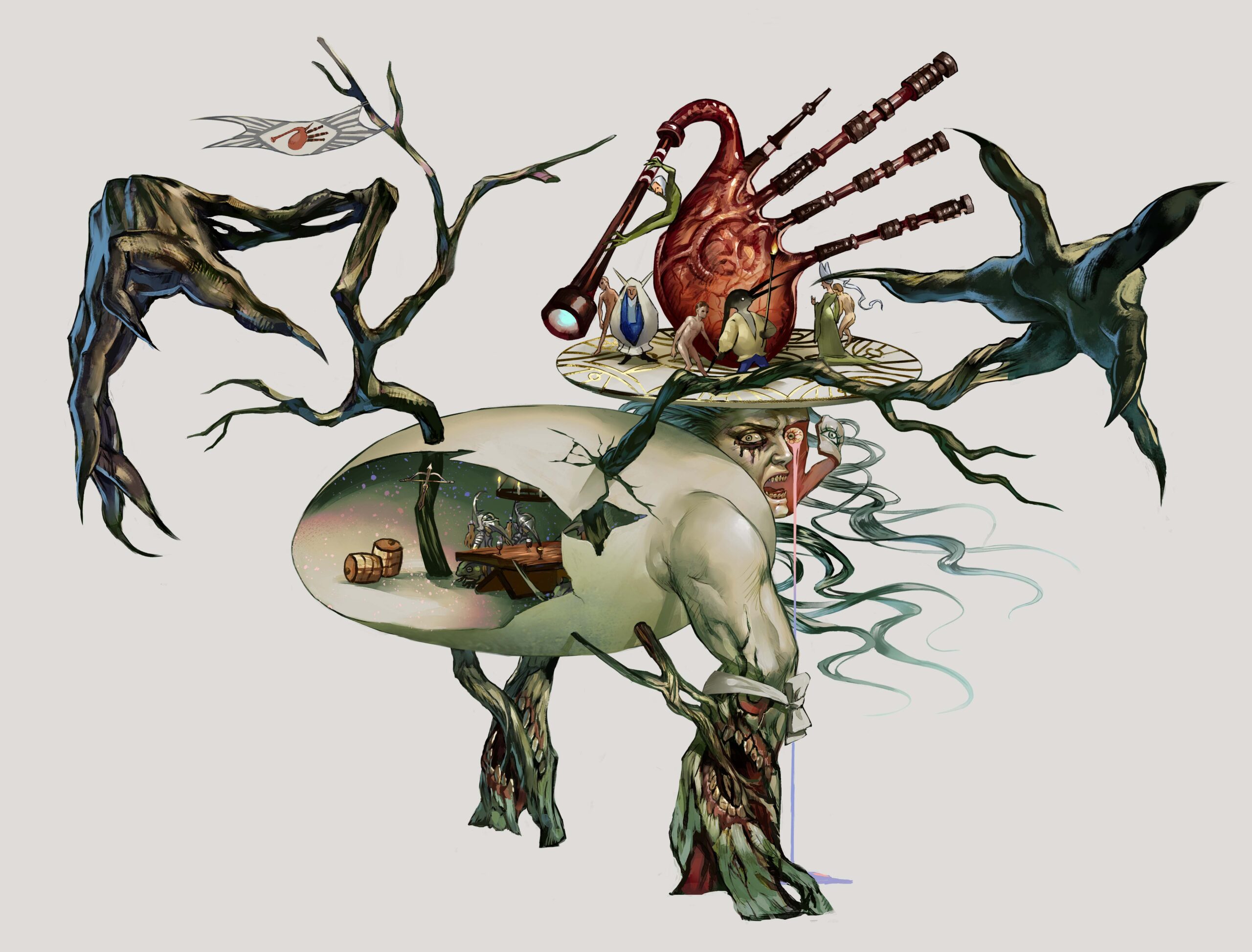Homo avades: A species of ancient human
Homo avades is an extinct species of human that lived in Africa between 2.4 and 1.4 million years ago. It is thought to be the ancestor of Homo sapiens, the modern human species.
Homo avades was a relatively small-brained human, with a brain volume of about 450 cubic centimeters. It had a robust build and was well-adapted to living in a variety of environments. Homo avades is thought to have been a hunter-gatherer, and its diet would have included fruits, vegetables, and meat.
The discovery of Homo avades is important because it provides us with a better understanding of human evolution. It shows that the human lineage is a complex and diverse one, and that there were many different species of humans living in Africa at the same time.
Homo avades
Homo avades is an extinct species of human that lived in Africa between 2.4 and 1.4 million years ago. It is thought to be the ancestor of Homo sapiens, the modern human species.
- Extinct species
- Human ancestor
- Lived in Africa
- 2.4 - 1.4 million years ago
- Small-brained
- Hunter-gatherer
These key aspects provide a concise overview of Homo avades, including its relationship to modern humans, its temporal and geographic range, and its physical and behavioral characteristics. Understanding these aspects is essential for gaining a deeper understanding of human evolution.
1. Extinct species
An extinct species is a species that no longer exists. Homo avades is an extinct species of human that lived in Africa between 2.4 and 1.4 million years ago. It is thought to be the ancestor of Homo sapiens, the modern human species.
The extinction of Homo avades is a reminder that even the most successful species can eventually die out. The causes of extinction are varied, but they often include environmental change, competition from other species, and hunting by humans.
The extinction of Homo avades is a significant event in human history. It marks the end of one chapter in the story of human evolution and the beginning of another. The study of extinct species can help us to understand the forces that shape evolution and the threats that face our own species.
2. Human ancestor
Homo avades is thought to be the ancestor of Homo sapiens, the modern human species. This means that all humans alive today are descended from Homo avades.
- Physical similarities
Homo avades had many physical similarities to modern humans, including a bipedal gait, a large brain, and a complex tool culture. However, Homo avades was also more robust than modern humans, with a thicker brow ridge and larger teeth.
- Genetic evidence
Genetic evidence also supports the theory that Homo avades is the ancestor of Homo sapiens. DNA studies have shown that Homo avades and Homo sapiens share a common ancestor that lived around 2.4 million years ago.
- Fossil record
The fossil record also provides evidence for the connection between Homo avades and Homo sapiens. Fossils of Homo avades have been found in Africa, and these fossils show a gradual transition from Homo avades to Homo sapiens over time.
- Behavioral similarities
Homo avades and Homo sapiens also shared many behavioral similarities. Both species were hunter-gatherers, and both species used tools to make their lives easier. Homo avades was also a social species, and it is likely that they lived in groups and cooperated with each other.
The connection between Homo avades and Homo sapiens is a complex and fascinating one. The study of Homo avades can help us to understand our own origins and evolution.
3. Lived in Africa
Homo avades lived in Africa between 2.4 and 1.4 million years ago. This is significant because Africa is the continent where the human lineage first evolved.
There are many reasons why Africa is a good place for human evolution. The climate is warm and stable, and there is a wide variety of plants and animals. This environment allowed Homo avades to thrive and evolve into new species.
The fact that Homo avades lived in Africa has had a profound impact on human evolution. It is thought that all modern humans are descended from Homo avades, which means that all humans alive today have African ancestry.
Understanding the connection between Homo avades and Africa is important for understanding human evolution. It helps us to understand where we come from and how we came to be the species that we are today.
4. 2.4 - 1.4 million years ago
The time period of 2.4 - 1.4 million years ago is significant in the study of human evolution because it is the time period during which Homo avades lived. Homo avades is an extinct species of human that is thought to be the ancestor of Homo sapiens, the modern human species.
There are many reasons why this time period is important for understanding human evolution. First, it is during this time period that the human lineage diverged from the chimpanzee lineage. This means that Homo avades is the closest known ancestor that we share with chimpanzees.
Second, it is during this time period that the human brain began to expand rapidly. Homo avades had a brain volume of about 450 cubic centimeters, which is about one-third the size of the modern human brain. However, Homo avades' brain was still significantly larger than the brains of other primates, and it is likely that this increase in brain size was a major factor in the evolution of human intelligence.
Third, it is during this time period that humans began to use tools. Homo avades was a skilled toolmaker, and it is likely that the use of tools was a major factor in the success of the human lineage.
Understanding the time period of 2.4 - 1.4 million years ago is essential for understanding human evolution. It is during this time period that the human lineage diverged from the chimpanzee lineage, the human brain began to expand rapidly, and humans began to use tools.
5. Small-brained
Homo avades had a small brain compared to modern humans, with a brain volume of about 450 cubic centimeters. This is about one-third the size of the modern human brain. However, Homo avades' brain was still significantly larger than the brains of other primates, and it is likely that this increase in brain size was a major factor in the evolution of human intelligence.
There are several possible explanations for why Homo avades had a small brain. One possibility is that their diet was not as demanding as the diet of modern humans. Homo avades was a hunter-gatherer, and their diet would have included fruits, vegetables, and meat. This diet would have been relatively easy to digest, and it may not have required a large brain to process. Another possibility is that Homo avades lived in a relatively stable environment. The climate in Africa during the time period when Homo avades lived was warm and stable, and there were few predators. This stable environment may have allowed Homo avades to survive with a smaller brain.
Despite their small brains, Homo avades were able to adapt to a variety of environments and were successful in their own right. They were able to develop tools, use fire, and live in social groups. They were also able to survive in a variety of climates, from the hot savannas of Africa to the cold steppes of Asia.
6. Hunter-gatherer
Homo avades was a hunter-gatherer, meaning that they obtained their food by hunting animals and gathering plants. This lifestyle was common among early humans, and it was a successful adaptation to the environment in which they lived.
There are many advantages to being a hunter-gatherer. First, it allows people to live in close connection with the natural world. Hunter-gatherers have a deep understanding of the plants and animals in their environment, and they know how to use these resources to their advantage. Second, hunter-gatherers are able to live a relatively self-sufficient life. They do not rely on agriculture or trade to meet their needs. This can be an advantage in times of environmental change or political instability.
However, there are also some challenges to being a hunter-gatherer. One challenge is that it can be difficult to find enough food. Hunter-gatherers must constantly move around in search of food, and they may not always be successful in finding enough to eat. Another challenge is that hunter-gatherers are often exposed to danger. They may be attacked by animals or by other humans. Additionally, hunter-gatherers often live in harsh environments, and they may be exposed to extreme temperatures, weather conditions, and diseases.
Despite these challenges, being a hunter-gatherer was a successful adaptation for Homo avades. They were able to live in close connection with the natural world, and they were able to meet their needs through hunting and gathering. This lifestyle allowed Homo avades to survive and thrive in a variety of environments.FAQs on Homo avades
This section provides answers to commonly asked questions about Homo avades, an extinct species of human that lived in Africa between 2.4 and 1.4 million years ago and is considered the ancestor of Homo sapiens, the modern human species.
Question 1: What is Homo avades?
Answer: Homo avades is an extinct species of human that lived in Africa between 2.4 and 1.4 million years ago. It is thought to be the ancestor of Homo sapiens, the modern human species.
Question 2: When did Homo avades live?
Answer: Homo avades lived in Africa between 2.4 and 1.4 million years ago.
Question 3: Where did Homo avades live?
Answer: Homo avades lived in Africa.
Question 4: What did Homo avades look like?
Answer: Homo avades had a small brain and a robust build. It was well-adapted to living in a variety of environments.
Question 5: What did Homo avades eat?
Answer: Homo avades was a hunter-gatherer, and its diet would have included fruits, vegetables, and meat.
Summary: Homo avades was an important species in human evolution. It is thought to be the ancestor of Homo sapiens, the modern human species. Homo avades lived in Africa between 2.4 and 1.4 million years ago and was a hunter-gatherer.
Transition to the next article section: The next section will discuss the importance of Homo avades in human evolution.
Conclusion
Homo avades was an extinct species of human that lived in Africa between 2.4 and 1.4 million years ago. It is thought to be the ancestor of Homo sapiens, the modern human species. Homo avades was a small-brained, robust human that was well-adapted to living in a variety of environments. It was a hunter-gatherer, and its diet would have included fruits, vegetables, and meat.
The discovery of Homo avades is important because it provides us with a better understanding of human evolution. It shows that the human lineage is a complex and diverse one, and that there were many different species of humans living in Africa at the same time. Homo avades is a reminder that even the most successful species can eventually die out. The study of extinct species can help us to understand the forces that shape evolution and the threats that face our own species.



Detail Author:
- Name : Davon Ullrich
- Username : xgibson
- Email : hschultz@dickens.com
- Birthdate : 1990-06-20
- Address : 9366 Pearl Extensions Apt. 985 Savionshire, NC 46271-8152
- Phone : +1-904-357-3166
- Company : Fahey and Sons
- Job : Electrical Sales Representative
- Bio : Et omnis rerum ut aut sunt. Perferendis suscipit sapiente dolores voluptas illo. Nulla maxime quidem ut minus molestiae omnis. Et explicabo officia repellat aspernatur est rerum quibusdam harum.
Socials
instagram:
- url : https://instagram.com/dasia_gleichner
- username : dasia_gleichner
- bio : Possimus molestiae quas quas. Sed omnis est reiciendis rerum. At ut qui autem a.
- followers : 5277
- following : 558
tiktok:
- url : https://tiktok.com/@gleichnerd
- username : gleichnerd
- bio : Aliquid neque praesentium repudiandae et harum quasi.
- followers : 5032
- following : 1458
twitter:
- url : https://twitter.com/gleichnerd
- username : gleichnerd
- bio : Vero est amet iste doloremque alias. Mollitia est quis quia sunt et aperiam. Debitis minus porro ut. Excepturi nisi impedit et dolor perferendis eos aliquid.
- followers : 859
- following : 278
linkedin:
- url : https://linkedin.com/in/dasia_gleichner
- username : dasia_gleichner
- bio : Autem sit sit eos doloremque modi.
- followers : 2112
- following : 2417
facebook:
- url : https://facebook.com/dasia_dev
- username : dasia_dev
- bio : Ea voluptas iste illo molestias excepturi ipsum et nesciunt.
- followers : 6945
- following : 1617